Every SEO specialist knows about long-tail keywords, we know they’re important and that any website can benefit from using them properly. But do we really know what long-tail keywords are?
What is not a long-tail keyword
Here is a featured result I get from Google, when I search for “long-tail keywords”:
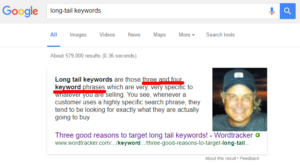
According to Stephen Mahaney, long-tail keyword is a highly specific phrase consisting of three and four words.
Here’s why it’s wrong:
Three and four words phrases are not highly specific, at least not in 2016. Think of how specific are keywords like “buy a laptop online” or “women’s running shoes”?
[Case Study] Optimize organic search traffic using log files analysis
Three and four words are the most common search query lengths in United States, and for the “head” in most cases.
Does it mean that long-tail keywords are even longer?
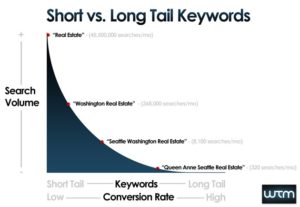
I don’t think so – shorter term doesn’t equal higher search volume or competition. And “head” or “tail” has nothing to do with keyword length at all. So if you hear that long-tail keywords are keywords consisting of n words – don’t start counting the number of words in your phrases, it’s a waste of time.
Why sorting keywords by length is wrong
Graphs, where keywords like “shoes” serve as an example of keyword with high search volume and high competition simply fail to recognize that volume of information on the internet grows incredibly fast, forcing users to be more precise with their search queries. We’ve ran a complete scan of Serpstat’s database and sorted approximately 100,000,000 search queries by length. Here’s what we got:

Y-axis: number of search queries in Serpstat’s database. X-axis: number of words in keyword phrases.
Data was taken from the following databases – Google (US, RU, UA, UK, CA, BG, ZA, KZ) and Yandex (UA, MSC, SPB). The most interesting results we got from Google.US database, where numbers are shifting towards the longer keywords more then anywhere else.
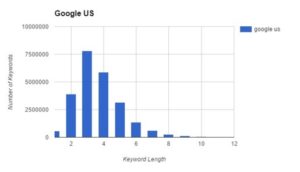
To back this data up and make sure that it wasn’t just our database, we manually scanned several websites, results were not too different. Here is the data for Amazon.com we got with Ahrefs:

Note the number of 1-word keywords compared to others.
If you still want to sort the keywords by phrase length, for whatever reason, you have to recognize the fact that short keywords are not as good or important as they used to be:
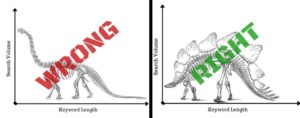
What is a long-tail keyword
There are numerous ways in which SEO experts define the “head” and the “tail”. I like the graph used by Moz in their Keyword Research Guide. It is one of the most accurate in my opinion, mainly because keywords are sorted search volume rather than length:
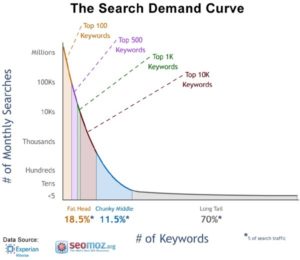
But if I had to start from scratch, and define the “head” and the “tail”, I would rely on two things – search volume and relevancy (which is a combination of semantic relevancy, level of competition and relevancy to user intent) – the higher these parameters are, the closer to the “head” the keyword is. I think Bubble Graph is the way to go if you want to visualize this data:
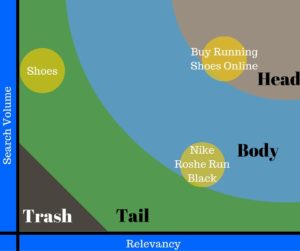
Note that this graph doesn’t apply to all websites and distribution will vary depending on the market. In less competitive environment it is a lot easier to find a keyword that won’t “sacrifice” it’s relevancy for lower competition and higher search volume. Also, this graph heavily depends on website’s ranking and authority, for stores like Zappos and Asos, “shoes” is definitely part of the head, but for those who just start the business or advertise locally it is of no use and may as well end up in trash.
How to find long-tail keywords for your website?
Unless you are one of the market leaders, like Zappos and Asos, you must research domains first, not keywords. Find your direct competitors, which usually are not just websites who rank for a keyword you like. Learn what keywords your competitors use, what advertisements they run and where they get their traffic from. Once you have established that, you will know your options. If your business is new, your long-tail keywords are in the “trash” of the market leaders and there is nothing wrong with it. Use keywords with low search volume, increase your traffic gradually and work your way up.
